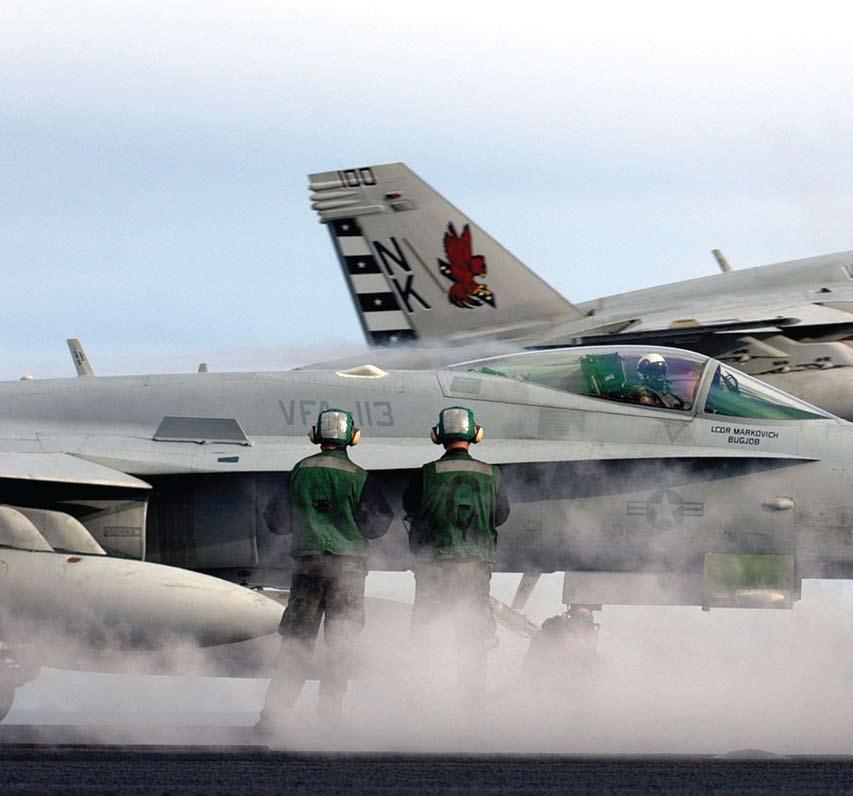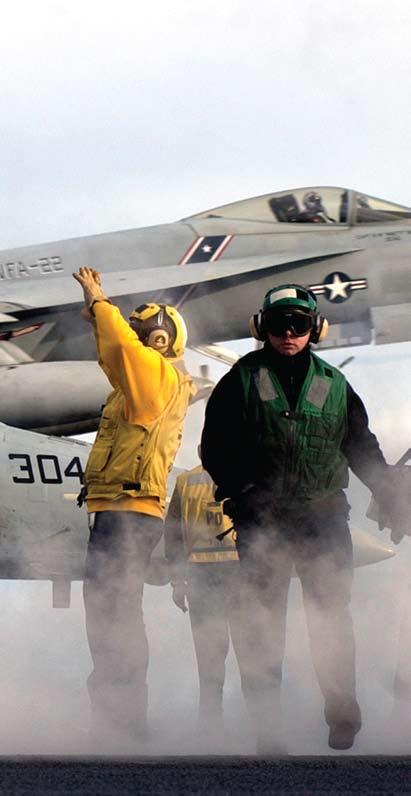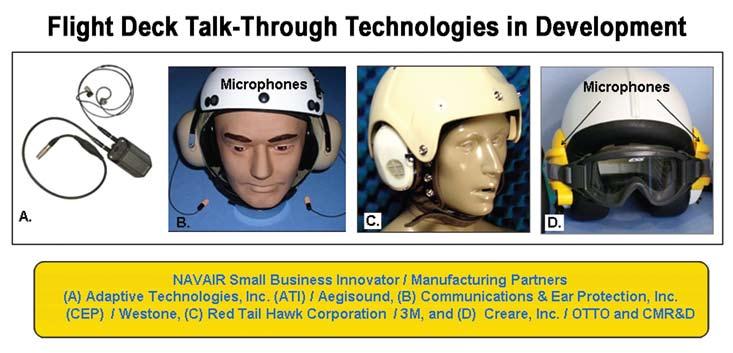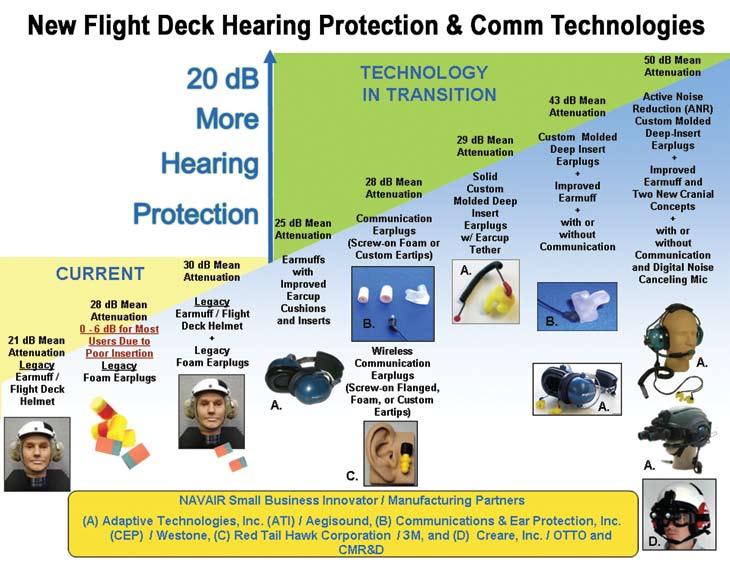
11 minute read
Tow at Your Own Risk
from MECH Fall 2008
By PR2(AW) George Williams
It was another hot day in Bahrain, and we were a few weeks into a 45-day detachment in the Persian Gulf. Operations had gone smoothly, and our Herc was getting the “beans and bullets” to where they needed to go around the AOR.
Advertisement
Because our plane was down with a discrepancy in the overheat-detection system, and because Bahrain was hosting the F-1 race that week, we had been parked out of sight and out of mind on the west ramp. We were coming in that day just to tow our plane across the airfield to its normal spot on the north ramp.
We arrived at the airfield and anticipated a quick move, followed by some time off at the pool. Everyone assigned to the move had done this a hundred times before. “What could be easier?” I thought.
We decided to skip the pre-move brief and positioned each person for the move. We had completed the same evolution from the north ramp to the west ramp a few days before, so we agreed to take the same positions. The only difference was that I wanted to ride brakes, instead of pumping up the brake system. An AE2 was stuck with that task. An AT2 again was behind the wheel of the tug, or “Buddha,” and an AM3 was our plane captain for the move.
The confusion began when the follow-me truck arrived to guide us across the active runway. The truck driver said I needed to radio tower during the move. However, the follow-me truck had assumed this duty during previous tow evolutions. I was relatively new to the C-130 and was not familiar with its radios. Our solution was to have the AE2 ensure the hydraulic system was fully pressurized and then join me in the cockpit to assume comms with tower.
I’ll breeze over another oversight here—as thankfully it didn’t directly contribute to this mishap—no wing walkers. We assembled a move team for the long tow on the spacious parallel taxiway, not for the confined spaces of the west ramp.
On top of our numerous other mistakes in this evolution, we added the final straw to this camel’s back: excessive speed. Even in sixth gear, we struggled to keep up with the follow-me truck. Although we had heard “never tow faster than a man can walk,” not even in the open, we ignored this procedure.

As we cleared the runway and radioed tower that we were entering the north ramp, the tug lost its momentum on the slight incline. Our Buddha driver downshifted to fifth gear in an effort to get more torque. And then it happened! All I felt was a little jolt from the pilot seat. Unfortunately, that little jolt was the transmission causing the tug to lurch and the tow bar to break free from the nose-landing gear. By the time I had applied the brakes, we already were on top of the tug.
Both the AE2 and I had applied the brakes at the same time and stopped the plane. But as fast as we reacted, it still was too late. Our excessive speed carried the aircraft right up onto the tow tractor. The aft end of the tractor pierced the nose radome and the radar dish inside. It also ruined the nose-landing gear tires, landing-gear-uplock assembly, and tow-fitting assembly. Thank God, it didn’t hurt or kill my fellow maintainers in the tractor itself.
Many things were done wrong that day because we were in a hurry to get the job done: no pre-move brief, inadequate manning, and excessive speed while towing the aircraft. The odds were against us, and it was only a matter of time before a mishap occurred. We learned that cutting corners and doing “det maintenance” may not always lead to an accident, but it’ll put you that much closer to one. We were lucky that no one was killed.
Petty Officer Williams works in the PR shop at VR-62.
Shock and Ow
By AT2 David Merriam
The timing of this injury mishap could not have been worse. My squadron had completed its packout a few hours earlier in preparation for a COMPTUEX/JTFEX aboard USS Ronald Reagan (CVN-76). Everything was going smoothly, and I was looking forward to the final stage of our work-ups when, suddenly, things went very wrong.
One of the last maintenance requirements my command had in preparation for the impending detachment was to hang an ATFLIR pod on Sting 311. The system had to be run to complete the job. A fellow AT climbed up the ladder and sat in the cockpit, while I connected the external-power cable from the power cart (NC-108) to the receptacle. I thought, “What could possibly go wrong on this sunny Lemoore afternoon?”
I turned on the power cart, allowing power to flow to the receptacle. Unfortunately, when the cockpit AT tried to apply power to the electrical bus, nothing happened—just silence. I suspected the

main reason for this was a partly-seated power cord in the receptacle. When I walked up to the power head and pushed it in a little more, an extremely large, hot flash of fire arced from the receptacle. My hands and face were severely burned.
The investigation revealed an obstruction between the power cord and the receptacle. Unknown to me at that time was the possibility that the door’s bonding wire could have worked its way in front of the receptacle’s conduit. When I tried to further seat the power cord, I actually had caused the simultaneous contact of the power cord, metal bonding wire, and the externalpower receptacle.
Black soot from the burnt power cord covered more than half my body. Under the soot were first-, second-, and third-degree burns on my hands and face. The electrical current missed hitting me directly by only a few inches. I immediately was
Navy photo by MC2 (AW/SW) Aaron Burden
rushed to a burn center, where specialists treated me. I count my blessings that I was able to walk away from this with just a few weeks of light and limited duty. The worst part about the timeliness of my injuries was that I had to miss ship’s movement while I healed. The rest of my shop embarked Reagan and left me behind.
My actions were somewhat commonplace across aviation maintenance. I didn’t secure power on the cart before moving the power head for a more secure fit. Regardless of what is commonly practiced in the fleet, there is no excuse for deviating from established maintenance practices.
The investigation also revealed some major discrepancies in how long the door’s bonding-wire strap should be. As the straps get worn, slightly longer and more dangerous straps are replacing them. Furthermore, the


strap connect points seem to be different on each aircraft on the line. Some are mounted inside the receptacle’s wall, while others are connected on the hinge. This situation can mean that even though the strap Receptacle (above) and is the right size, it is power cord (below) “effectively” too long because it is mounted an inch or so away from where the manufacturer intended.
We submitted a TPDR addressing the inconsistencies in the length of bonding straps. I suspect other squadrons may have similarly configured aircraft. A simple walk down the line might reveal a number of such hazards. • Don’t take ground-power cord operations lightly. Respect hazards associated with electrical power. • Follow all steps and procedures to the letter. They are written for a reason, and we are not at liberty to deviate. • Be sure to secure the source of the electrical power before you do anything to the power cable itself. • Be sure you have a clear path between the power cable and receptacle. If the cable will not seat properly, there probably is a good reason for it.
Petty Officer Merriam works in the AT shop at VFA-113.
New Hearing Protection

By Valerie Bjorn and Jim Wilt
After surveying more than 1,000 flight-deck person- nel, NAVAIR took away some important lessons for developing new hearing protection.
The goals for new hearing protection are: • Motivate (not just dictate) earplug use. -Provide individual custom design, improved comfort. • Ensure earplugs are worn correctly. -Customize earplugs so they fit like puzzle pieces. -Notify user if an acoustic leak is present and needs to be fixed. -Track personal noise exposure more closely. -Improve hearing-conservation training. -Increase supervisor involvement and accountability through the chain of command. • Provide hearing-protection alternatives that are logistically smart (a good value, easy to buy, use and maintain). -Not everyone works in the worst-case scenario (150 dB jet noise). -Not everyone needs the most costly and capable hearing protection. • Offer hearing protection alternatives. -No single product is good for everyone. -These alternatives and any related advancements should be plug-and-play compatible. • Provide non-radio deck crew the ability to speak to each other while protecting their hearing level and allowing them to maintain situational awareness.
Through the small-business innovation-research

For a detailed look at hearing conservation efforts, watch for the winter issue of Sea&Shore magazine in Dec 08.

(SBIR) program, NAVAIR is working with four companies to develop a suite of hearing protection and communication technologies to meet these goals. Hearing protection and communication options will allow users to tailor their selection to their work-noise environment. As shown in the figure, there is a progression of capability, starting from what has been used on the flight deck for decades up through active noise reduction (ANR), deep-insert, custom communication earplugs worn under improved earmuffs and used with a digital noisecanceling microphone.
By using deep-insert custom earplugs, the user can achieve a more assured earplug fit, compared to foam and flanged earplugs, and thereby achieve a good, consistent hearing-protection level. It is this assured fit by deep-insert custom earplugs that allows ANR to cancel noise in the small trapped space between the earplug inner tip and the eardrum. By canceling noise here, instead of in a headset for example, the ANR electronics benefit from all the combined passive attenuation of the earmuff and custom earplugs, which leaves a much lower noise level for the ANR to reduce.
Future endeavors funded by the Office of Naval Research and the SBIR program include two new NAVAIR projects. One is developing a way to improve how ear-canal shape is captured to make custom earplugs. Another effort is to develop in-ear noise measuring for flight-deck use. This dosimetry capability will allow users the ability to ensure their hearing protection is worn correctly by detecting and notifying them of acoustic leaks, and it will track their daily noise exposures more accurately—a critical element to NMCPHC and BUMED’s hearing-conservation program. Another NAVAIR SBIR effort is developing the capability for flight-deck crews in non-radio jobs to talk to each other through their hearing protection, while also receiving safe levels of sound cueing.
All of these hearing-protection and communication technologies are being designed to integrate with both the legacy and the new flight-deck cranial.
Ms. Bjorn works at NAVAIR with Human Systems, Code 4.6, 17 and Mr. Wilt is with the Personal Protection Branch, Code 4.6.7.3
Dangerous Move
By AMEAN Javier Guzman
Just after sunset, Petty Officer Ryan Bivens and I helped Petty Officer Marsh, an AME troubleshooter, with daily and turnaround inspections on the flight deck of USS Ronald Reagan (CVN-76). We had to complete the inspections on several inbound jets. After aircraft 500 landed, Petty Officer Bivens and I dropped the birdcage to pull the empty LOX bottles. He told me that he could handle it, so I waited for 503 to recover.
After chocks and chains were on the Prowler, I dropped the birdcage, climbed in, and pulled two LOX bottles. I then carried them to the LOX farm for servicing. Our fight-deck chief stopped by and asked for an update. I told him that the two bottles from 500 already were done, and when I finished servicing and installing the two I had in 503, it would be done, as well.
I carried the bottles back to 503, but the birdcage was up because the flight-deck crew had to move the aircraft. Petty Officer Marsh and I grabbed the bottles and followed the aircraft to the fantail, where the blueshirts chocked the wheels. It seemed odd to me that they did not chain down the bird.
Petty Officer Marsh confirmed that we were cleared to install the bottles, so I went to the nosewheel well and dropped the birdcage. After the AME2 and I had installed the LOX bottles, I returned to the nosewheel well and manually pumped up the birdcage with the auxiliary handle. I tried to reinstall the pump handle, but I could not see the insertion hole for the pin. To get a better view, I put one foot on top of the wheel and pushed myself up into the wheel well.
Just before I installed the pin, I felt the wheel rotate and saw my boot wedged between the nose strut and the wheel itself. As the tow tractor continued to pull the aircraft, I dislodged my foot and scrambled out of the nosewheel well as fast as I could. I then found our flight-deck QA representative and told him what had happened. He already had been told and was going to let Maintenance Control know. When he asked me if











